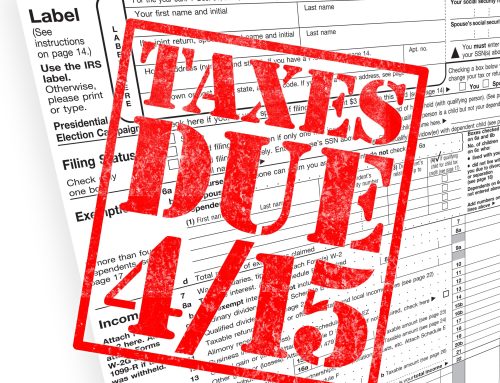New tax bill…updated 12/10/10
Late on December 9, Senate Majority Leader Harry Reid introduced H.R. 4853, the Tax Relief, Unemployment Insurance Reauthorization, and Job Creation Act of 2010. The Tax Relief Act contains a two-year extension of the Bush-era tax cuts that was negotiated by the President and Republicans, and significant estate tax relief. However, it also contains a trove of other tax breaks for businesses and individuals, including enhanced first-year depreciation deductions for businesses, a payroll tax cut of two percentage points for 2011 for employees and self-employed individuals, and a two-year alternative minimum tax (AMT) patch.
Here’s an overview of what’s in the Tax Relief Act, based on information released late on December 9.
EGTRRA Tax-Cut Rules Extended for Two Years
Under current law, the provisions of the Economic Growth and Tax Relief Reconciliation Act of 2001 (EGTRRA, PL 107-16), other than those made permanent or extended by subsequent legislation, sunset and won’t apply to tax or limitation years beginning after 2010. (Sec. 901 of EGTRRA) H.R. 4853 would postpone the Sec. 901 EGTRRA sunset rule for two years. That is, under the Tax Relief Act, the provisions of the Economic Growth and Tax Relief Reconciliation Act of 2001 (EGTRRA, PL 107-16), other than those made permanent or extended by subsequent legislation, will sunset and will not apply to tax or limitation years beginning after 2012 (instead of 2010). Thus, all of the following favorable tax rules (among others) will remain in place through 2012:
(1) The income tax rates for individuals stay at 10%, 15%, 25%, 28%, 33% and 35% (instead of moving to 15%, 28%, 31%, 36% and 39.6%).
(2) The size of the 15% tax bracket for joint filers & qualified surviving spouses remains at 200% (instead of dropping to 167%) of the 15% tax bracket for individual filers.
(3) The standard deduction for married taxpayers filing jointly (and qualified surviving spouses) remains at 200% (rather than 167%) of the standard deduction for single taxpayers. (The standard deduction for marrieds filing separately is half the joint filer amount.)
(4) Itemized deductions of higher-income taxpayers are not reduced (after 2010 they would have been reduced by 3% of AGI above an inflation-adjusted figure, but reduction couldn’t exceed 80%).
(5) A higher-income taxpayer’s personal exemptions are not phased out when AGI exceeds an inflation-adjusted threshold (they would have been after 2010).
The current, favorable rules for the following tax provisions also will remain in place through 2012: Coverdell Education Saving Accounts (CESAs), formerly called education IRAs; exclusion for employer provided educational assistance under Code Sec. 127; exemption from the payments-for-services rule for amounts received under certain Government health professions scholarship programs; above-the-line student loan interest deduction; credit for employer-provided child care facilities; earned income tax credit (EITC); credit for household and dependent care; and child tax credit.
JGTRRA Rules for Capital Gains and Qualified Dividends Extended for Two Years
The bill defers for two years the sunset rule of Sec. 303 of the Jobs and Growth Tax Relief Reconciliation Act of 2003 (JGTRRA, PL 108-27). Thus, through Dec. 31, 2012, long-term capital gain will continue to be taxed at a maximum rate of 15% (instead of 20% (18% for assets held more than five years)); and qualified dividends paid to individuals will be taxed at the same rates as long-term capital gains (instead of being taxed at the same rates that apply to ordinary income).
Alternative Minimum Tax (AMT) Patched for Two Years
The AMT exemption amounts for 2010 will be $47,450 for individuals and $72,450 for married taxpayers filing jointly; for 2011, they will be $48,450 for individuals and $74,450 for married taxpayers filing jointly. The exemption amount for marrieds filing separately is half the amount for joint filers. Without the patch, AMT exemption amounts would have plummeted to their pre-EGTRRA levels.) Also for 2010 and 2011, personal credits will be allowed against the AMT.
Estate Tax Relief Through 2012
The estate tax returns after 2010 and before 2012, but with the following changes:
- A $5 million unified and indexed exemption amount ($10 million for couples).
- The top tax rate will be 35% for estate, gift, and generation skipping transfer taxes.
- Reunification of estate and gift taxes, effective for gifts made after December 31, 2010.
- An election will allow the choice of no estate tax and modified carryover basis for estates arising on or after Jan. 1, 2010 and before Jan. 1, 2011. There will be a $5 million generation-skipping transfer tax exemption and zero percent rate for the 2010 year.
- Effective for estates of decedents dying after Dec. 31, 2010, the executor of a deceased spouse’s estate will be able to transfer any unused exemption to the surviving spouse.
Incentives for Businesses to Invest in Machinery and Equipment
The bill OKs the following major new incentives for businesses to invest in machinery and equipment:
- A 100% bonus first-year depreciation allowance for property acquired and placed in service after Sept. 8, 2010, and before Jan. 1, 2012;
- A 50% bonus first-year depreciation allowance for property placed in service after Dec. 31, 2011 and before Jan. 1, 2013;
- Extension through Dec. 31, 2012, of the election to accelerate the AMT credit instead of claiming additional first year depreciation; and
- For tax years beginning after Dec. 31, 2011, setting the maximum expensing amount under Sec. 179 at $125,000 and the investment-based phaseout amount at $500,000 (under current law, the expensing figures drop from $500,000/$2 million for 2010 and 2011 to $25,000/$200,000 after 2011).
Temporary Employee Payroll Cut for 2011
Under current law employees pay a 6.2% Social Security tax on all wages earned up to $106,800 (in 2011) and self-employed individuals pay a 12.4% Social Security self-employment taxes of on all their self-employment income up to the same threshold. The bill provides a payroll/self-employment tax holiday during 2011 of two percentage points. As a result, employees will pay only 4.2% Social Security tax on wages and self-employment individuals will pay only 10.4% Social Security self-employment taxes on self-employment income up to the threshold.
Host of Expired Business Tax Breaks Retroactively Reinstated and Extended Through 2011
A host of business tax breaks that expired at the end of 2009 will be retroactively reinstated and extended through 2011, including: the research credit; the new markets tax credit; employer wage credit for activated reservists; 15-year writeoff for qualifying leasehold improvements, restaurant buildings and improvements, and retail improvements; 7-year writeoff for motorsports entertainment facilities; enhanced charitable deductions for contributions of food inventory, for contributions of book inventories to public schools and for corporate contributions of computer equipment for educational purposes; expensing of environmental remediation costs; allowance of the Code Sec.199 domestic production activities deduction for activities in Puerto Rico; and the work opportunity tax credit.
Long List of Tax Breaks for Individuals Retroactively Reinstated and Extended Through 2011
Many tax breaks for individuals that expired at the end of 2009 will be retroactively reinstated and extended through 2011, including: the $250 above-the-line deduction for certain expenses of elementary and secondary school teachers; the election to take an itemized deduction for State and local general sales taxes in lieu of the itemized deduction permitted for State and local income taxes; increased contribution limits and carryforward period for contributions of appreciated real property (including partial interests in real property) for conservation purposes; the above-the-line deduction for qualified tuition and related expenses; the provision that permits tax-free distributions to charity from an Individual Retirement Account (IRA) of up to $100,000 per taxpayer, per tax year (additionally, individuals will be allowed to make charitable transfers during January of 2011 and treat them as if made during 2010); the increase in the monthly exclusion for employer-provided transit and vanpool benefits to that of the exclusion for employer-provided parking benefits. In addition, the bill will extend for an additional year (i.e., through 2011), the rule allowing premiums for mortgage insurance to be deductible as interest that is qualified residence interest.
Other Provisions Extended Through 2011
The list of energy related provisions that will be extended through 2011 include: the $1.00 per gallon production tax credit for biodiesel, as well as the small agri-biodiesel producer credit of 10 cents per gallon; the $1.00 per gallon production tax credit for diesel fuel created from biomass; the placed-in-service deadline for qualifying refined coal facilities; the credit for manufacturers of energy-efficient residential homes; the $0.50 per gallon alternative fuel tax credit (but the credit will not be extended for any liquid fuel derived from a pulp or paper manufacturing process); the suspension on the taxable income limit for purposes of depleting a marginal oil or gas well; the Code Sec. 45M credit for US-based manufacture of energy-efficient clothes washers, dishwashers and refrigerators (with modified standards); the Code Sec. 25C credit for energy-efficient improvements to existing homes (reinstating the credit as it existed before passage of the American Recovery and Reinvestment Act (standards for property eligible under 25C are updated to reflect improvements in energy efficiency); and the 30% investment tax credit for alternative vehicle refueling property.
Various disaster relief provisions also will be extended through 2011, including: the time for issuing New York Liberty Zone bonds, effective for bonds issued after Dec. 31, 2009; the increased rehabilitation credit for qualified expenditures in the Gulf Opportunity Zone; and the additional depreciation deduction claimed by businesses equal to 50% of the cost of new property investments made in the Gulf Opportunity Zone (expenditures in 2011 will be eligible if the property is placed in service by Dec. 31, 2011).
© 2010 Thomson Reuters/RIA. All rights reserved.






